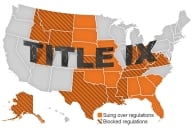You have /5 articles left.
Sign up for a free account or log in.
In 1944, President Franklin Delano Roosevelt signed into law the Serviceman’s Readjustment Act, known as the G.I. Bill. It offered returning veterans a series of benefits, the best-remembered of which was funding to attend college and defray living expenses.
The primary rationale for the legislation was not to extend educational access or affordability. Rather, it was a labor market strategy designed to reduce the tidal wave of veterans seeking jobs and avoid the high unemployment rates that followed World War I. The extraordinary success of this program not only avoided unemployment, but catapulted millions into the middle class and helped create the most sophisticated workforce the world had, to that point, ever seen.
Today, as a component of the nation’s stimulus package, we need an updated version of the G.I. Bill.
Unlike the original bill, which rewarded service, this new bill would be a rescue measure.
As in the past, a primary goal would be to decrease pressure on what today is a shrinking job market and limit growing unemployment rates. But another equally important goal would be to prepare the more educated labor force the nation needs for economic development and global competitiveness at a time when a dwindling number of jobs are available to individuals without a college education and its associated skills.
The stimulus G.I. Bill would seek to assure both college access and affordability. It would focus on two populations -- low-income Americans who attend college at dramatically lower rates than their fellow citizens and middle- and upper-middle-class populations for whom the cost of college is growing far faster than their paychecks. Support would be means-tested -- graduated based upon need. Higher education would be free for families with incomes below $100,000
The new G.I. Bill would be extended to all Americans who have earned a high school diploma or G.E.D. The scholarship would cover the costs of tuition, fees, books and living expenses for up to four years of full-time college attendance, as a last-dollar scholarship. That is, a student would have to apply for and use all other forms of financial aid available to them first -- family, government, private, institutional and personal -- and the scholarship would provide the last dollars needed to fill any gaps.
College tuition and expenses would be set at the local cost of attending a public community college for the first two years and a public four-year college for the final two years. Living stipends would be set at the equivalent of a full-time minimum wage job, adjusted to local costs of living and a student’s number of dependents.
Much like programs that bail out corporations, the scholarship would give the government an equity stake in the student’s future. In exchange for government support, recipients would provide the government a tax supplement, perhaps an additional one or two percent of their yearly income, annually for life.
The government would receive short-term savings in unemployment benefits and the cost of other social programs -- prisons, welfare, health care -- which typically rise during hard times. In the longer run, government would benefit from the higher salaries and taxes that college-educated people pay, as well as the additional equity share in taxes that recipients of this funding would be required to pay.
Over the past few years, many proposals have been made to increase college access and affordability. Most involve increasing Pell Grant support or making more loan money available. This proposal is not remarkably different. What is distinctive in the idea would be its timing, the statement it makes about supporting people as part of a bailout, its historic roots, its bundling of existing financial aid programs, and its potential to generate additional revenues.
The original G.I. Bill, and its reauthorizations, built the modern American middle class. A new civilian G.I. Bill would preserve that middle class, providing a wise investment in the most precious resource America has -- its human capital. It is difficult to imagine a better or more greatly needed economic stimulus.








